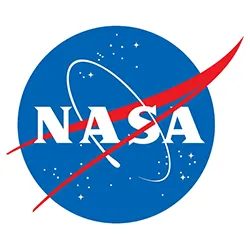Multilingual
Provide access to government information and services for people with limited English proficiency.
Demand for multilingual digital content is growing. In response to this demand, federal agencies are publishing more digital content in multiple languages. Expanding digital content in languages other than English is essential to building public trust, effectively serving communities, and ensuring government content is accessible for all.
Executive Order 13166, Attorney General memorandum, and Title VI of the Civil Rights Act

Multilingual: Essential knowledge
-
An introduction to multilingual glossaries
Understand how and why to use a multilingual glossary when translating content.
-
Top 10 best practices for multilingual websites
Tips for creating and managing multilingual government websites.
-
Introduction to translation technology
Learn how and when to use translation technology to provide meaningful access for people with limited English proficiency.
-
Select a language: Help a user to choose their preferred language
U.S. Web Design System technical guidance on how to support users in their language of choice.
-
Bilingual glossaries, dictionaries, and style guides
Multilingual resources that improve the way we communicate with people in languages other than English.
Multilingual events
Strengthening information accessibility for consumers with limited English proficiency
The plain language tie to translating digital content
USWDS Monthly Call - September 2022
Language Connections: Tips to Create, Maintain, and Present Non-English Digital Content
Multilingual news
Designing a multilingual future: A conversation with Laura Godfrey
On the eve of her retirement, Laura Godfrey reflects on multilingualism and equitable access to government information.
Approaching language translations to provide a better user experience: A Login.gov case study
Learn how the Login.gov team improved translations and added a new language to enhance their service.
How multicultural research guides the USA.gov benefit finder
Discover how USA.gov tailors its benefit finder experience for both English and Spanish-speaking users through culturally nuanced content. Through dual-track language research, a bilingual support team, and A/B testing, USA.gov ensures that more users receive relevant, empathetic, and user-friendly content. The USA.gov team also identified and addressed recruitment challenges to interatively improve its ongoing research processes. — via USA.gov

Department of Justice recognizes anniversary of executive order to improve access for people with limited English profiency
The Department of Justice recently marked the 24th anniversary of Executive Order 13166, which aims to improve access to federal services for individuals with limited English proficiency (LEP). Its Civil Rights Division reviewed language access plans across federal agencies, emphasizing progress in hiring and staff training, improving language assistance services, and expanding multilingual content. The department is committed to eliminating language barriers in federal programs, improving communication and access for all communities. — via Department of Justice

Creating a blueprint for quality: How the PX Contact Center helps agents grow their skills
Every day, live agents at USA.gov’s Public Experience (PX) Contact Center answer questions from the public about government benefits and services. Learn how the PX Contact Center develops a workforce of excellent agents, using immersive onboarding, tailored and continuous training, feedback loops, and calibration meetings to empower their agents to deliver accurate information. USA.gov’s system for employee and contact center management ensures that every customer interaction leaves a lasting impact. — via USA.gov

Resources on Multilingual
-
Requirements for delivering a digital-first public experience
Learn how to implement 21st Century IDEA to design and deliver better websites and digital services.
-
Bilingual Glossaries, Dictionaries, and Style Guides
Multilingual resources to standardize the use of various languages across government.
-
California wildfires guidance for U.S. government websites and social media
Addressing web and digital communications related to the California wildfires.
-
An introduction to multilingual glossaries
Learn how to use multilingual glossaries to share common translations and contribute to consistent communication across government.
-
Hurricane Helene guidance for U.S. government websites and social media
Addressing web and digital communications related to Hurricane Helene
-
Requirements for improving access to services for people with limited English proficiency (LEP)
Learn how to strengthen and improve meaningful language access for all people in the U.S., regardless of the language they speak.
-
Introduction to translation technology
What is translation technology? This introductory resource will help you understand how and when to use translation technology to provide meaningful access for people with limited English proficiency.
-
Multilingual Huddle: Designing for Translation
In this webinar, Laura Godfrey and Fedora Braverman share tips for translating content in the digital context.
-
Top 10 Best Practices for Multilingual Websites
Ten tips for creating and managing multilingual government websites.
-
Spanish Language Style Guides and Glossaries
Spanish Language Style Guides are resources for government employees, translators, and communications professionals who work with the government that contains information on grammar and style issues, and glossaries to standardize the use of Spanish across government.
-
Spanish Language Style Guide and Glossaries: Grammar
Examples and explanations for words, phrases, acronyms, numbers, punctuation, capitalization, symbols, and more used in Spanish grammar.
More News and Events on Multilingual
55 posts
Designing a multilingual future: A conversation with Laura Godfrey
On the eve of her retirement, Laura Godfrey reflects on multilingualism and equitable access to government information.
Approaching language translations to provide a better user experience: A Login.gov case study
Learn how the Login.gov team improved translations and added a new language to enhance their service.
How multicultural research guides the USA.gov benefit finder
Discover how USA.gov tailors its benefit finder experience for both English and Spanish-speaking users through culturally nuanced content. Through dual-track language research, a bilingual support team, and A/B testing, USA.gov ensures that more users receive relevant, empathetic, and user-friendly content. The USA.gov team also identified and addressed recruitment challenges to interatively improve its ongoing research processes. — via USA.gov

Department of Justice recognizes anniversary of executive order to improve access for people with limited English profiency
The Department of Justice recently marked the 24th anniversary of Executive Order 13166, which aims to improve access to federal services for individuals with limited English proficiency (LEP). Its Civil Rights Division reviewed language access plans across federal agencies, emphasizing progress in hiring and staff training, improving language assistance services, and expanding multilingual content. The department is committed to eliminating language barriers in federal programs, improving communication and access for all communities. — via Department of Justice

Creating a blueprint for quality: How the PX Contact Center helps agents grow their skills
Every day, live agents at USA.gov’s Public Experience (PX) Contact Center answer questions from the public about government benefits and services. Learn how the PX Contact Center develops a workforce of excellent agents, using immersive onboarding, tailored and continuous training, feedback loops, and calibration meetings to empower their agents to deliver accurate information. USA.gov’s system for employee and contact center management ensures that every customer interaction leaves a lasting impact. — via USA.gov

How USAGov uses data to improve content
Each month, USAGov’s content designers spend many hours ensuring that the content on USA.gov and USAGov en Español is up-to-date, accurate, and meets user needs. Learn how their team does holistic reviews of each topic section based on a rolling calendar with the goal of updating all content at least every 6 months. — via USA.gov

Spring 2024 Community Summit
Getting the word out about voter registration: Vote.gov’s first social media takeover with USAGov
Last fall, vote.gov and the USAGov program partnered for their first-ever social media takeover on National Voter Registration Day. The campaign, which encouraged the public to register to vote, reached 36,000 people across USAGov’s platforms and generated over 2,000 engagements. The partnership raised awareness for vote.gov, boosted vote.gov’s website traffic, and laid the groundwork for the future collaborations and resource-sharing between the two entities. This collaboration between vote.gov and USAGov offers a model for social media takeovers and partnerships between federal agencies and teams. — via USA.gov

Designing with empathy
Discover the transformative power of empathy in design with USAGov’s benefit finder. From simplifying applications to a mobile-first approach, the revamped tool not only functions efficiently in two different languages and cultural contexts, but demonstrates the consideration for users in challenging situations. Explore how empathy turned a government service into a compassionate lifeline, creating a product that genuinely understands and meets people where they are. — via USA.gov

In 2023, TTS stepped up to meet growing technology demands for government
GSA’s Technology Transformation Services (TTS) celebrated major milestones and met growing demand for its services in 2023. This wrap-up summaries key successes in five areas: improving customer experience, modernizing federal technology, innovating for the future, focus on equity and accessibility, and building the technology workforce of tomorrow. — via General Services Administration

The CFPB Language Access Plan for consumers with limited English proficiency
The Language Access Plan describes the CFPB’s policy and how the CFPB’s language access activities are implemented across operations, programs, and services. — via Consumer Financial Protection Bureau

Speaking your language USAGov outreach approach to bilingual content
As a bilingual program, USAGov aims to give English and Spanish-language audiences the information they want in the cultural context they need. Here are a few main things the team learned when transcreating messaging through the USAGov and USAGov en Español outreach channels. — via USA.gov

Celebrating 20 years of USAGov en Español
USAGov en Español is excited to celebrate their 20th anniversary this month! Since 2003, the website has been a trusted guide to government information and services for Spanish speakers. Explore this timeline of USAGov en Español’s milestones, name changes, and accomplishments as they’ve served Spanish speakers and federal partners over the past two decades. — via USA.gov

Why the American People Deserve a Digital Government
OMB released new policy guidance for government that includes a variety of actions and standards to help federal agencies design, develop, and deliver modern websites and digital services. Memo M-23-22, Delivering a Digital-First Public Experience, will make it seamless for the public to obtain government information and services online, and help agencies fully implement the 21st Century Integrated Digital Experience Act (21st Century IDEA). — via The White House

NASA Releases First Season of Spanish-language Podcast
In celebration of Hispanic Heritage Month, NASA is releasing new content for Universo curioso de la NASA, the agency’s first Spanish-language podcast. A five-episode season will start Tuesday, September 19, with new episodes released weekly. In each episode, Universo curioso will highlight the contributions of NASA’s Hispanic and Latino workforce to the agency’s groundbreaking work in Earth and space exploration. The season features interviews with NASA experts, including an astronaut, a space weather scientist, an astrochemist, and oceanographers. Episodes focus on some of NASA’s top missions, bringing the wonder of exploration, space technology, and scientific discoveries to Spanish-speaking audiences around the world. — via National Aeronautics and Space Administration

Strengthening information accessibility for consumers with limited English proficiency
Why vote.gov supports multiple languages
According to a 2019 U.S. Census Bureau survey, nearly 68 million people in the U.S. speak a language other than English at home. To help make the voting process accessible to everyone who is eligible, vote.gov works with state election offices, federal agencies, and non-partisan organizations to create a national source of accurate voting information and clear registration instructions in multiple languages. — via USA.gov

Introducing the new USA.gov
We’re excited to share that the new USA.gov and USAGov en Español are live. However, we’re not finished. See what we’ll be working on in the future. — via USA.gov

Testing Beta for Accessibility
The USAGov team strives to ensure all our websites are accessible to as many people as possible. This includes those who need the use of specialized assistive technologies when browsing the internet. In building beta.USA.gov we deliberately validated that it met Section 508 and WCAG 2.0 compliance requirements. Our testing approach includes a three step hybrid method that may be suitable for other agency use. — via USA.gov












